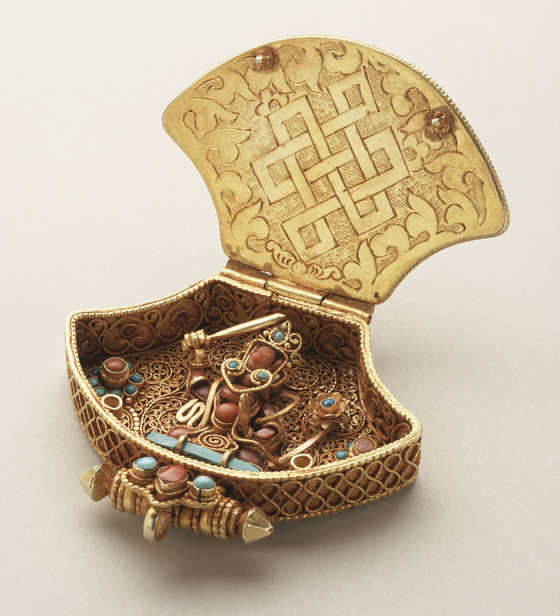Amulet Box Pendant with Green Tara and Manjushri


Please log in to add this item to your gallery.
View comments
No comments have been posted yet.
Add a comment
Please log in to add comments.
Please log in to add tags.
* Nearly 20,000 images of artworks the museum believes to be in the public domain are available to download on this site.
Other images may be protected by copyright and other intellectual property rights.
By using any of these images you agree to LACMA's Terms of Use.
Amulet Box Pendant with Green Tara and Manjushri
Nepal, Kathmandu Valley, Patan, circa 1800-1850
Jewelry and Adornments; amulets
Gilt silver, chased and repoussé, and gilt silver filigree; inset with coral, turquoise, and lapis lazuli
2 7/8 x 2 7/8 x 1 in. (7.3 x 7.3 x 2.54 cm)
Southern Asian Art Council (M.2003.20)
Not currently on public view


